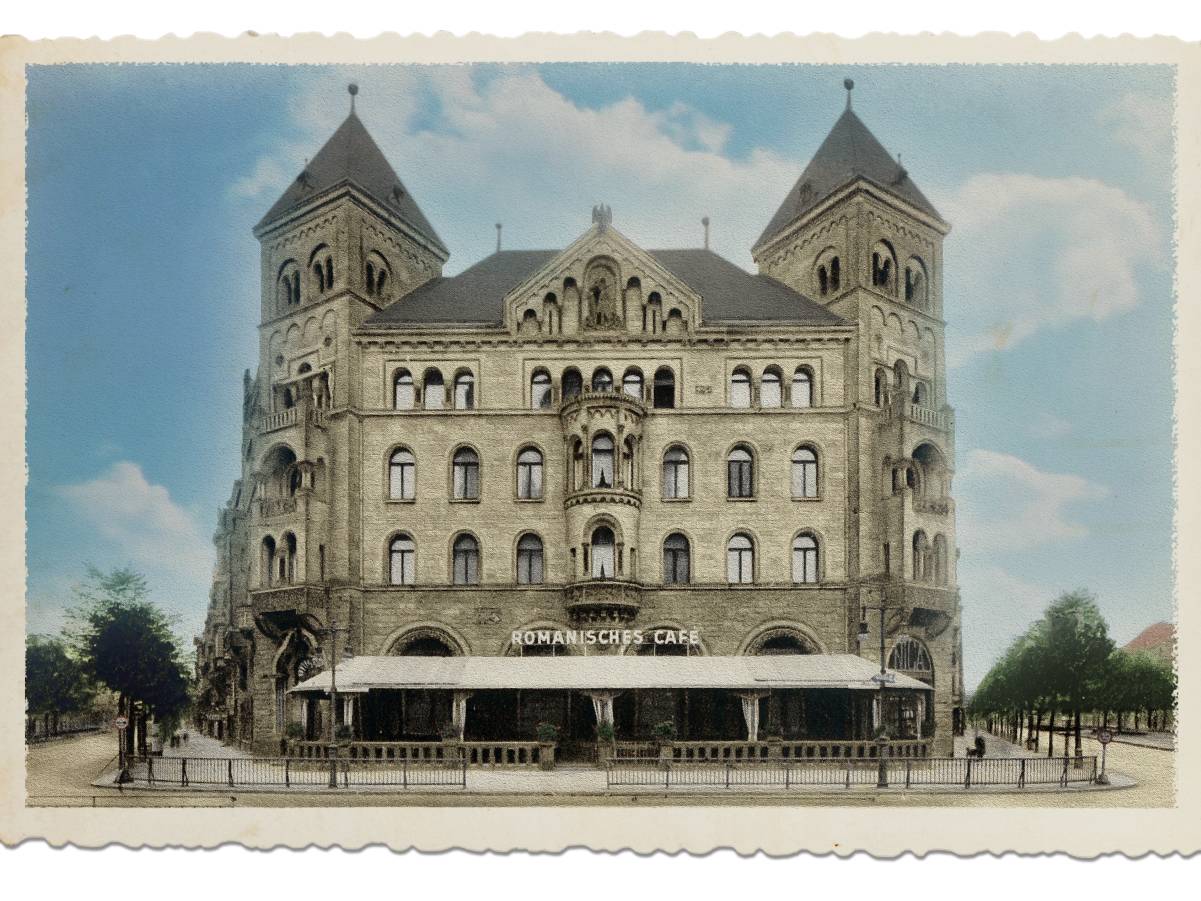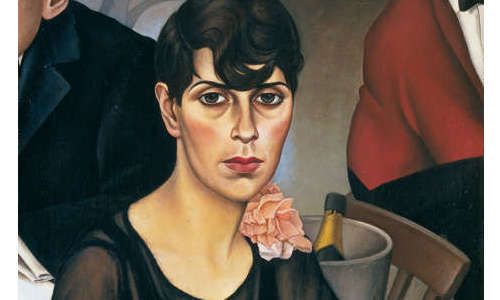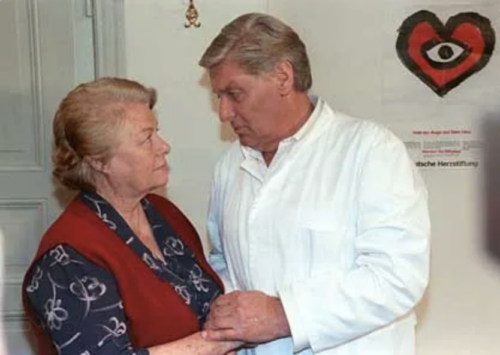
Berlin has a great new literary attraction! Until the end of January, that is…
A vacant retail space has been temporarily transformed into a museum dedicated to Charlottenburg’s legendary Romanisches Café – the inter-war site of many a literary gossip session, chess matches galore and artistic inspiration in spades. Imagine the Algonquin Round Table but in Berlin, with more cake (actually, I am imagining the cake; maybe they ate Schnitzel and Bratkartoffeln). Regulars included the writers Else Lasker-Schüler, Kurt Tucholsky, Erich Kästner, Mascha Kaléko and my beloved Irmgard Keun, along with journalists, artists, actors, publishers and creative society in general. The place has become a synonym for the intellectual Berlin of the 1920s, a lost location much yearned for by a certain kind of contemporary German writer.
The exhibition is small but informative and enjoyable, grouped around a gaggle of tables laid with 1920s porcelain, notebooks and a typewriter. It highlights famous commentators on the café, especially the newly enfranchised women of the time, and adds context on the neighbourhood and the architecture. There’s film footage and music and artefacts and bookshelves and all the fun stuff you’d expect. My favourite is a much-feared card handed discreetly to guests who had outstayed their welcome while not spending enough money. The museum also offers guided tours by the curators, and historical walking tours of the surrounding streets.

Now obviously the café didn’t just go out of business back then; as the exhibition addresses, many of its customers were targeted by the Nazis and it became a poor shadow of its former self before the building was bombed in 1943. In its place came the Europa-Center, opened by West Berlin’s mayor Willy Brandt in 1965 (with Romy Schneider in attendance!). The centre is basically a shopping mall with an office tower attached, topped in prime West-Berlin style by a three-tonne rotating neon Mercedes symbol. It’s hard to imagine a building that screams I Love Capitalism! more loudly. And yet it exudes the faded charm of an eighties legend: oh, the Clock of Flowing Time! The subterranean Irish pub! The KFC on the corner! The ghosts of goths and Dave Gahan imitators and Christiane F. haunting its dark corners… You can almost smell the patchouli and acne ointment.

The museum is housed inside the Europa-Center, approximately on its former site opposite the Kaiser Wilhelm Memorial Church. And because it’s not actually a functional café, you can treat yourself to double the time-travel – by retiring to the fantastic three-tiered Eiscafé for an old-fashioned sundae or a foamy Berliner Weisse with raspberry syrup, served by a waitress who might have leapt straight out of a Günter Pfitzmann sitcom. You know you want to!